Timeline of Innovations
-
1984
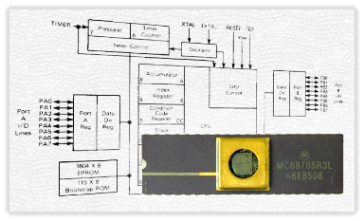
THE FIRST BURNER CONTROL SYSTEM USING A MICROPROCESSOR DIDN'T COME FROM A BIG COMPANY.
Only a small visionary team could spend time to make "sensitive microelectronic devices" work in harsh environments: project started in a garage workspace, based on an high density NMOS microcontroller manufactured by Motorola.
The first mature product will come 4 years later, introducing several original solutions and safety techniques into a very conservative industry. -
1985

The first "all-in-one" manual burner control, built on a commercial flame relay.
Power supply switch, ignition switch, fuse, pilot lamps, snap-in terminal board for easy replacement and the innovative flame signal strenght meter were included into a DIN43900 96x96mm enclosure. -
1986
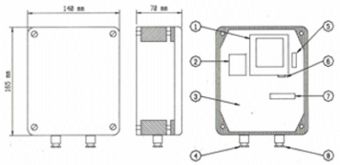
Only a few devices can use a single electrode shared between ignition and flame detection. To prevent disruptive failures, the poor implementation widely adopted for domestic appliances (surge arresters) has been replaced by a sequence relay performing a zero-voltage switching. All the logic and the ignition transformer embedded into the unit: perfect for any existing flame supervision system.
-
1987
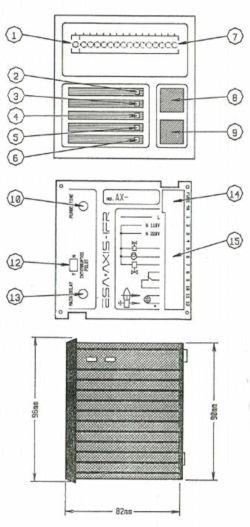
The next step was to integrate the flame relay instead of using a commercial product in order to build a cheaper version suitable for operation with electrodes and UV detectors, reducing the depth and adopting a polyester front fascia with no part exposed.
-
1988
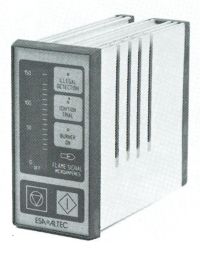
Keep it compact. The new burner control device for semiautomatic operation becomes smaller and available in both DIN43900 48x96mm and 3HEx9TE rack enclosure. An input to start the burner and an output to give the status has been provided to operate the unit from remote.
-
1989
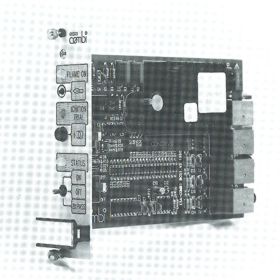
A compact rack system with embedded electrode switching for single rod operation, including a bypass switch for commissioning purposes.
For this very simple flame safeguard we tested a sequencer as a different and affordable approach to manage simplified operating cycles. -
1989
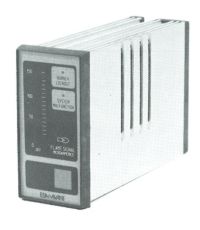
It's time to build the first commercial microprocessor based device. For the first time a simple display giving information on cycle steps and failures detected by autodiagnostic system becomes available on a compact and cheap burner control unit.
Commissioning, troubleshooting and maintenance are now easier than ever. Another significant improvement is the complete configurability through a TTY serial com port; for this purpose a free software utility is released (freeware in 1989!). A set of strong safety techniques coming from academic and research fields were used to guarantee a safe and reliable operation, many years before norms and regulations. -
1990
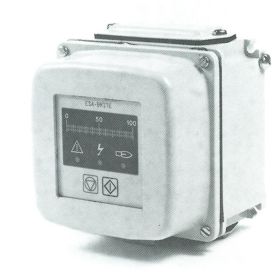
Distributed control automation is something very familiar nowadays, but something new when Brite has been designed to be installed near the burner and managed from remote by means of communication network. This "ante-litteram" fieldbus was based on frequency modulation over wire and, in some application, the main power supply line could be used like carrier for the information (a.k.a. powerline modem, today).
-
1992
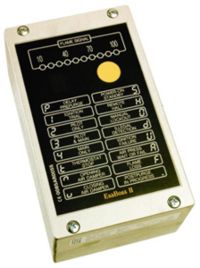
Definitely the distributed control will be our mission. Boss is the first burner control unit built on essential requirements of EN298:1992, with expandability option by means of piggyback boards.
Remote control through cheap TTY interface and a new concept of completely removable electronic, entirely fitted on the top enclosure, for easy installation and maintenance. -
1993

Working around the burner… it seems that also the UV scanner could be improved, so we built a cheap UV scanner in robust aluminium enclosure, provided with standard ISO4400 connector for better reliability and serviceability of installations.
-
1994

The Gas Appliances Directive, relating to appliances burning gaseous fuels, will came into force, subject to certain transitional provisions, on 1 January 1996. The CE marking is mandatory on all gas-fired domestic and industrial appliances to be sold within Europe. EN298 became the reference and our products are compliant! It's time to certify the product and, before to start this time and money expensive experience, let's make a re-engineering to improve the manufacturability.
-
1994

After several test we found that no one of the existing physical media can guarantee a reliable operation where several burner controllers are linked together, sharing the same path of noisy power supply with severe EMC exposure due to ignition transformers.
We need a strong fieldbus and we have to design it. Using low impedance, high current and a three level to assert idle, recessive and dominant status the new proprietary fieldbus is born: T3ACS (Threshold 3 level Asynchronous Communication System) from now on TRAX. Communication speed is limited to 4800 baud but a very efficient protocol minimizes the effect of command propagation and a de-facto real time is possible up to 100 burners over 1000 meters. It works on standard 3-phase lighting busbar trunkets and plug-in and out "while running" is allowed! -
1995

Two handy programmers introduced for an easy configuration of burner control units directly on field. Injector is the big one to manage all the features, Palmarino is for network parameters only.
-
1995

Since the fieldbus control became a great resource for tunnel kiln in ceramic, food and glass industry we decided to make a subset of EsaBossII with embedded TRAX and single gas valve output.
Simple and compact: for the first time an ignition transformer is fitted into the same enclosure of flame safeguard system and a microprocessor based system is working together with high voltage transformers, both electromagnetic and electronic types. A 3-phase lighting busbar is the carrier for power supply and communication fieldbus, allowing easy re-arrangement of the burners. Main control cabinets became smaller, schematic diagrams simplified, less cables, terminals and conduits and revamping an old kiln can be done very quickly. -
1996

This is the first time (worldwide) a flame safeguard built on single microprocessor is under assessment for EC-type certification. Although any European Notified Body can make the assessment, we want a certificate released by real authorities having long experience and good reputation... and do it outside of our Country to avoid any speculation: DVGW is the choice and TUV will carry out the test! After a long and stressful time both EsaBossII and EsaQuad received the EC-type certification based on EN298:94. It was May 6th, 1996.
-
1998

It seems that GSM network offers great opportunities of innovation. Remotely controlling and managing devices and systems will have a large influence on modern business processes. Situations can much faster be acted upon. Faults will be detected faster and malfunctions will be repaired sooner. It's time for another challenge: let's build a "black box" to manage installations from remote. Later this will become a completely independent business.
-
1999

TRAX is a good solution but higher speed and largest installation are welcome. Thanks to new electronic solutions we can reach the targets increasing the speed to 38400 baud driving up to 300 physical units per network. Our products are strong enough but some equipment into the cabinet are exposed to interferences routed through TRAX, isn't strictly our problem but the improvement of isolation barrier is possible. TraxBus must be available on all devices and the economic impact on remote units must be very small, not more than 2 Euro per unit: done.
-
2000
Already written: we was naive. Meanwhile we was developing the new product, our former partner decided to use the technical file that we provided to ask another Company to build clones.
Not a really good product, but the original concept still in it and that Company tooks the contacts with the customers during last years.
We was obliged to close our production facility and a sense of frustration frozen everyone for some time. Naive, but not stupid: in a signed agreement between parties we reserved the intellectual property. Could be hard but we'll protect our rights against such shameful action, the new Quad is a good product and we don't want to throw it away. A civil action against the "genius" inventor will start. -
2000

In two years we tested tens of different candidate microcontrollers and solutions with a single idea in mind: the new product must be so well designed to operate without ancillary filters or protections.
Competitors are coming, but are all developing very complex, fat and costly devices, we're on opposite direction and we want a single modular product coming from a shrinking process of the existing one. TraxBus will be the communication platform. -
2001

On October 17th, 2001 after 7 months inspection trial, Quad receives the EC-type certificate from DVGW. Test was carried out at TUV Suddeutschland.
Since this device can be managed from remote and current version of EN298 doesn't have any specific requirement on this matter, we ask TUV to provide a specific confirmation about the fulfillment of all requirements, because Quad remote control is safe enough to be operated by generic supervisors (this means that you don't need a fail safe PLC to control Quad, whereas this falls under the integrator responsibility for competitors products). -
2003
On May 20th, 2003 after a long time of deny, in front of all the evidences our former partner admit the illegal use of proprietary information and so:
We consider "innovation" also this winning legal battle because we won in 2 years only… in Italy… against a powerful Corporation. There was many friends working in such Company, so we didn't ask to stop the production of cloned devices. Anyway such products are based on old technology, poor implementation of communication and, like other competitors it was built using twice (or more) the components of the original device: another fat device, maybe isn't a real competitor… for sure isn't a technical competitor. On May 23rd (3 days later) we signed an agreement with KROMSCHROEDER.
-
2003

A new flame safeguard needs a new UV sensor: it must be smaller, without ancillary parts and suitable for operation up to 90°C instead of 60°C of the previous sensor. The new UV4 is entirely made with thermal and electric insulating fiber, sealed to avoid a quartz glass in the middle and with cooling port. It's cylindric so it can be removed easily also on hot burners, thanks to its isolated enclosure.
-
2005

But the UV scanner could be improved once more.
More compact and extended sensor temperature to 125°C to operate where others fails. -
2006

During last decade we built several custom piggyback board to tailorize the Quad for specific needs. It's time to provide standard solutions for the most diffused applications. Quad400 is intended for classic electrical remote control, with isolated interface. Very simple to use and flexible enough to fit all basic applications.
-
2007
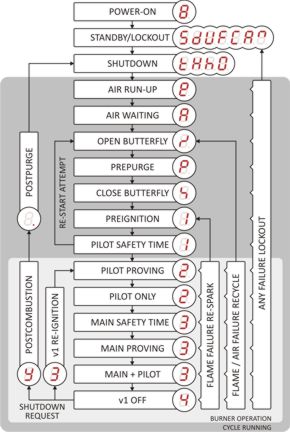
… to complete the range a full featured unit, where the behaviour of every step of the cycle is configurable. Quad600 can control the positioning of an air damper (0...100%) from remote, without potentiometer. High temperature bypass control and thermocouple input (optional) are available. Four inputs and two outputs with configurable behaviour.
-
2008
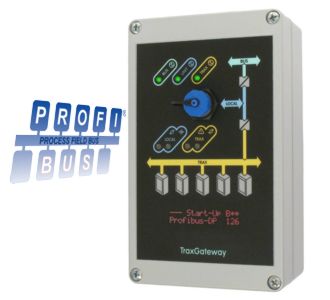
Many customers of ours prefer to manage the burners by means of standard PROFIBUS-DP link. Unfortunately this filedbus exibit high communication failures when exposed to severe EMC coming from ignition sparks, moreover this bus needs dedicated expensive cable and connectors.
To take advantage from both TraxBus and PROFIBUS we introduced a gateway that collect up to 100 burners to be managed like a single PROFIBUS node.
This preserves the immunity of TraxBus and it's cheapest than any competitors solution. -
2010
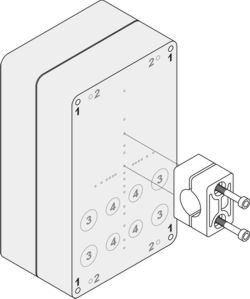
A new enclosure: overall dimension are the same of the smallest old one, but more room is available inside and less weight for this epoxy coated aluminium die casting enclosure, featuring an innovative back shell.
-
2012
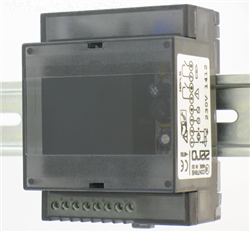
Mainly intended for fire detection in laser cutting machines, this flame relay could be used together with automatic safeguards or as a stand alone manual burner control.
-
2015
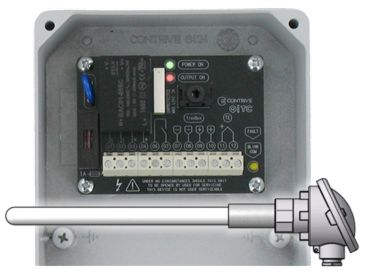
Introducing a configurable temperature measurement unit supporting a wide range of thermocouple sensors. The relay output can be controlled from fieldbus or configured to activate above/below setpoint.
Installed within the enclosure of our Burner Control Units or as an independent unit with its own aluminum box. Use it as a thermostat or acquisition module, reducing the cost for compensating cables. -
2016
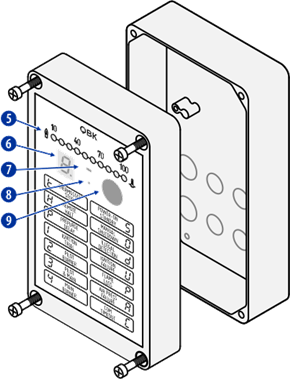
Full complementary design, double microcontroller, triple redundancy of output disconnecting elements, permanent operation, high-temperature surveillance bypass, smartphone commissioning, log memory… QBK replaces Quad after more than 15 years of unbeatable performance and price.
Better than ever before at same price. -
2019
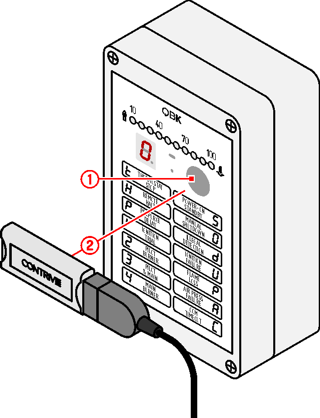
USB infrared reader that can be used with PC and Smartphone for BCU configuration and diagnostics.
-
2020
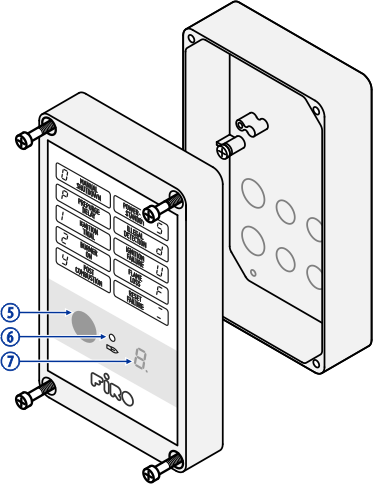
A subset of QBK for low cost industrial application. Single stage burners, status display, infrared interface, lockout output and remote reset input.
